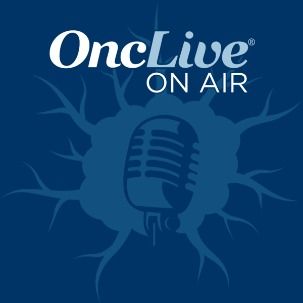Article
Real-World Data Show Improved Survival With Adjuvant Immunotherapy in Melanoma
Author(s):
The use of adjuvant immunotherapy in patients with resected stage IIIC melanoma resulted in improved survival benefit, according to real-world data from an early analysis of the National Cancer Database.
Justin Moyers, MD

The use of adjuvant immunotherapy in patients with resected stage IIIC melanoma resulted in improved survival benefit, according to real-world data from an early analysis of the National Cancer Database (NCDB), which were presented during a press program ahead of the 2020 AACR Virtual Annual Meeting II.1
Results showed that in the overall population, the 12-month survival rate of patients who received adjuvant immunotherapy was 93% versus 91% in those who did not; the 24-month survival rates were 83% versus 80%, respectively (P = .051).
When broken down by substage, the 24-month survival rates in patients with stage IIIC disease who received adjuvant immunotherapy had a statistically significant improvement in survival compared with those who did not receive the treatment, at 70% versus 59%, respectively (P <.01).
Although survival rates were still higher in those with stage IIIA and stage IIIB disease who received immunotherapy after surgery, the benefit did not reach statistical significance. The rates for immunotherapy-treated patients with stage IIIA and stage IIIB disease were 94% and 84%, respectively, versus 91% and 81%, respectively, for those who did not receive the treatment.
In October 2015, the FDA expanded the approval of the checkpoint inhibitor ipilimumab (Yervoy) to include adjuvant treatment of patients with stage III melanoma with pathologic involvement of regional lymph nodes >1 mm who had undergone complete resection, based on results from the pivotal phase 3 EORTC 18071 trial.2 Data from that trial demonstrated that adjuvant ipilimumab resulted in superior recurrence-free survival (RFS) versus placebo, with a median RFS of 26.1 months versus 17.1 months with placebo.
The approval of adjuvant nivolumab (Opdivo) followed 2 years later, in December 2017. The decision followed data from the phase 3 CheckMate-238, which showed that at 12 months, the RFS rate with nivolumab was 70.5% (95% CI, 66.1%-74.5%) versus 60.8% (95% CI, 56.0%-65.2%) with ipilimumab.3
“Patients with stage 3 melanoma tend to have poor prognosis even after curative-intent surgery,” Justin Moyers, MD, lead author of the study and fellow at Loma Linda University in California, said in a press release.4 “The goal of our study was to determine the percentage of patients receiving immunotherapy after surgery in the era of FDA approval for adjuvant checkpoint inhibitors following surgical resection in the real-world setting.”
To this end, Moyers and coinvestigators examined data from the NCDB, which is a nationwide, facility-based, comprehensive clinical surveillance database which captures 72% of all cancer cases in the United States, and 22% of all melanoma cases, according to Moyers. The database is a joint product of the Commission on Cancer of the American College of Surgeons as well as the American Cancer Society.
For the first early analysis of the NCDB, investigators examined all cases of stage III melanoma that had been diagnosed between 2015 and 2016 and that had corresponding documentation of surgical resection. Patients who had received immunotherapy prior to surgery or who received systemic therapy other than immunotherapy, were excluded. Cases with unclear sequence data were also left out of the analysis, along with cases that did not have the appropriate documentation of immunotherapy receipt or surgery.
Notably, Loma Linda University Medical Center did not require approval via institutional review board by Waiver of Determination. The analysis was done through the use of IBM statistical software SPSS® version 25, as well as Microsoft Word.
A total of 583,212 cases of patients ≥18 years with confirmed melanoma in the NCDB were reviewed; of those cases, 9,526 were stage III melanoma cases that had been diagnosed between 2015 and 2016. A total of 8,160 patients met the inclusion criteria for the study; 4,094 of patients diagnosed in 2015 were included in the survival analysis.
The mean age of the cohort of patients examined was 60.3 years; the mean age for patients who received immunotherapy was 54.8 years versus 62.4 years for those who did not (P <.01). Additional results showed that between 2015 and 2016, the number of patients who received immunotherapy increased from 24.8% to 30.6%.
Patients with lower Charlson-Deyo scores, a measure of comorbidity where lower scores indicate less disease, were found to have received immunotherapy at a higher percentage. Twenty-eight percent of patients with a score of 0 received immunotherapy versus 18.1% of patients with a score of ≥3.
Furthermore, investigators noted that with regard to payer categories, rates of those receiving immunotherapy were similar, with the exception of Medicare, which was 18.4% versus 30%+ in all other payer categories, according to Moyers.
Because the NCDB is a retrospective cohort database, it comes with some limitations. The specific immunotherapy agents used were not recorded; thus, differences between such agents cannot be evaluated. Furthermore, investigators are unable to differentiate between those who received immunotherapy as adjuvant treatment compared with palliative therapy following progressive disease post-surgery. Moreover, disease-specific survival was not recorded, nor was some sociodemographic data such as the education status and income of individual cases.
“We found a survival benefit [with] immunotherapy given after surgery in [patients with] stage III melanoma at a 24-landmark analysis, although it is not yet statistically significant [for the overall population; it was, however, significant for [those with] stage IIIC disease,” Moyers concluded. “Our analysis is the first of the NCDB in the years since the FDA approved immunotherapy [for use] after curative-intent surgery.”
He added that further analyses should be performed in order to further demonstrate the real-world benefit of adjuvant immunotherapy in this patient population.
“In this trial, investigators analyzed data of over 8,000 patients, focused on the year of 2015-2016, which is the first year when adjuvant immunotherapy was approved for this indication; however, the implementation of this therapy was slow to start. Only one-third of patients received this therapy, but those patients did better than the ones who did not get adjuvant immunotherapy,” Antoni Ribas, MD, PhD, FAACR, professor of medicine, surgery, and molecular and medical pharmacology at the University of California Los Angeles, commented in the briefing.
“Interestingly, patients with Medicare-only insurance and comorbid conditions were less likely to receive adjuvant immunotherapy, and there was a trend for patients with lower income to also have received less adjuvant immunotherapy,” Ribas added. “These data highlight the negative impact of sociodemographic factors on having access to therapy that has been proven to benefit patients both in clinical trials and in the real-world setting.”
References
- Moyers JT, Chong EG, Mitchell J, et al. Immunotherapy in resected stage III melanoma: an analysis of the National Cancer Database. Presented at: 2020 AACR Virtual Annual Meeting II; June 22-24, 2020. Abstract 4338.
- Eggermont AM, Chiarion-Sileni V, Grob JJ et al. Adjuvant ipilimumab versus placebo after complete resection of high-risk stage III melanoma (EORTC 18071): a randomised, double-blind, phase 3 trial. Lancet Oncol. 2015;16(5):522-530. doi:10.1016/S1470-2045(15)70122-1
- Weber J, Mandala M, Del Vecchio M, et al. Adjuvant nivolumab versus ipilimumab in resected stage III or IV melanoma. N Engl J Med. 2017;19:1824-1835. doi:10.1056/NEJMoa1709030
- Real-world data shows immunotherapy after melanoma surgery yields survival benefit. News release. American Association for Cancer Research. June 22,2020. Accessed June 19, 2020. bit.ly/310mcBs.









